Top Tier CPU Air Coolers Q3 2015: 9-Way Roundup Review
by E. Fylladitakis on July 6, 2015 8:00 AM ESTThe Raijintek Tisis
Raijintek is yet another new European company, founded in 2013. For a company this new, Raijintek is retailing a fair number of products, which are thirteen coolers, four cases and several fans, with the company now expanding to peripherals and PSUs. The Tisis is Raijintek's most recent and advanced CPU cooler, which was originally baptized "Nemesis" but it was renamed due to a naming collision with another company's similar product.
The Tisis is supplied in a reasonably sized cardboard box with strong black/red artwork on it, focused around a picture of the cooler itself. Inside the box everything is well packed and the cooler is protected inside a polyethylene foam shell. Despite the obviously very rough time our sample had during its shipping to us, everything inside the box was unscathed.
Raijintek kept the bundle to the minimum of things required. Aside from the hardware and thermal grease necessary for the mounting of the cooler and a long L-type Philips PH2 screwdriver, nothing else is provided. It is however noteworthy to mention that there are no wire clips for the fans as this is the only cooler in this roundup review that is using rubber mounts instead.
There are two 140 mm fans provided inside the package, both with a red frame and white blades. There is nothing prominent about the fans, with the exception of the partially jagged blades. The OEM is recognizable and is PelHong Technology, a Chinese manufacturer. Both fans are identical, have engines with sleeve bearings and a relatively low maximum speed of just 1.000 RPM.
The Raijintek Tisis is a very large asymmetric dual tower cooler, with the towers completely different from each other. The fins of the front tower are larger and both of their fan-facing sides are jagged, while the fins of the rear tower are smaller and their sides are completely straight. Furthermore, the fins of the front tower have folded sides, effectively forming a wind tunnel that prevents the air from exiting from the sides. Openings for the rubber mounts of the cooling fans can be clearly seen. This method is a little more convenient than wire clips but it also prevents the adjustment of the fan's height, removing the possibility to raise the front fan a little bit to increase the RAM modules clearance.
The copper base and heatpipes of the Tisis are nickel-plated and polished, especially the contact surface that has been machined down to a perfect mirror finish. Five thick 8 mm heatpipes go through the relatively small base of the Tisis and expand to both fin arrays. For the installation of the cooler, the middle fan needs to be removed, as there is no other way for the screwdriver to reach the base of the cooler.


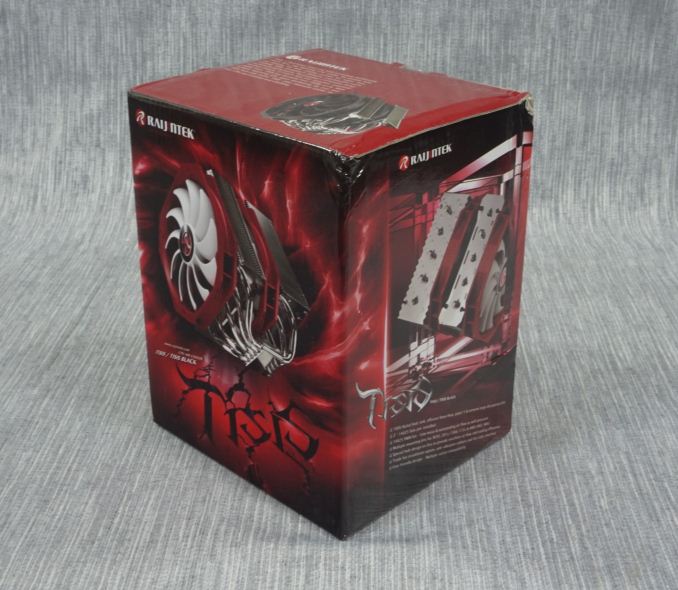
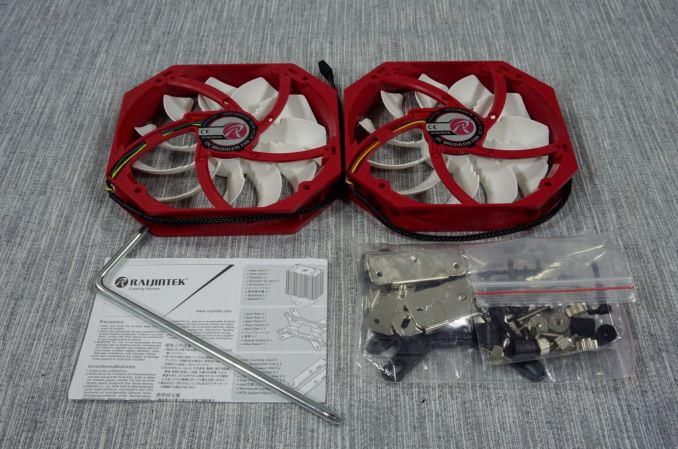
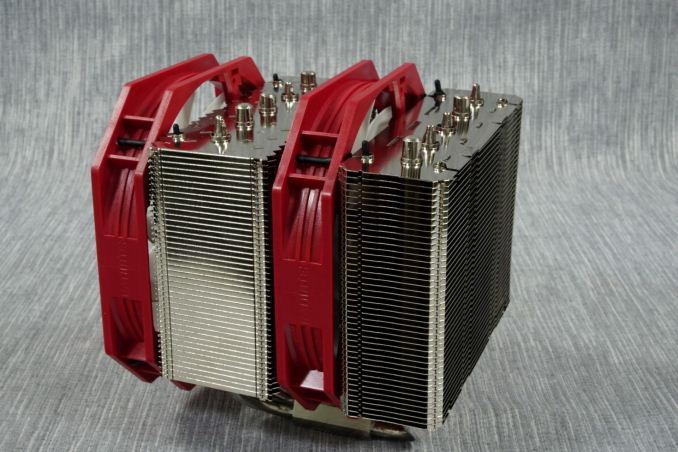
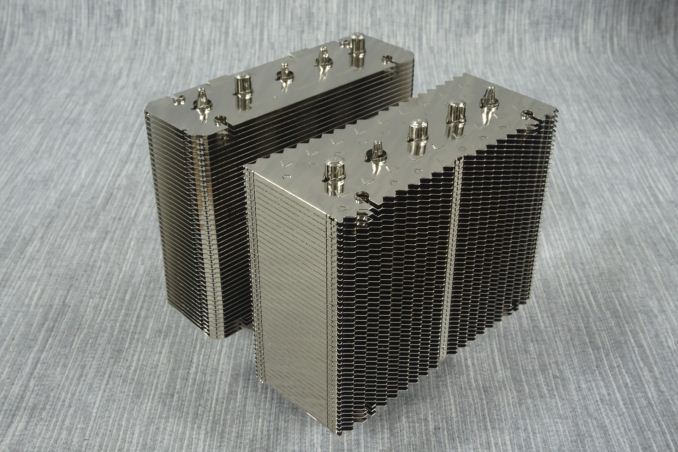
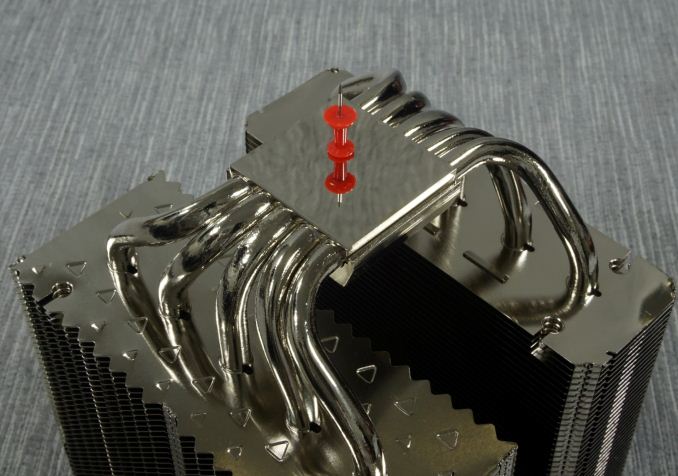








135 Comments
View All Comments
mrvco - Monday, July 6, 2015 - link
I agree. It would be helpful to know how the 212 compares both with regards to cooling and quietness. I typically prefer "quieter" so I'd be curious to know how much better the "Dark Rock Pro 3" is than the 212... is it $40+ better?Eidigean - Monday, July 6, 2015 - link
I actually bought the 212 and added a second fan to it, not because it was cheap, but because it would fit between the 2x2 banks of memory on my Rampage IV Formula perfectly (with 1 mm of space on either side) allowing the tall memory heatsinks to rise up, and inconsequentially get a breeze from the fans. The CPU runs nice and cool (and quiet) with a modest overclock.I'd get the offset Noctua NH-D15S if I ever upgrade from a 4 core 3820 to a 6 core 4930K.
effortless - Monday, July 6, 2015 - link
Exactly my thoughts. The Cooler Master Hyper 212 EVO needs to be included in this test, to show exactly what 90% who buys CPU coolers are missing out on, or eventually not missing out on.randomlinh - Monday, July 6, 2015 - link
I'm confused about your complaint. What's wrong w/ the 212? What's wrong w/ saving $10 for 1 deg celcius difference?I genuinely don't know, I have a 212 from almost 4 yrs ago? It works. It's quiet (for the time). The only complaint is if I try to go super small form factor, it won't work.
icrf - Monday, July 6, 2015 - link
If it were only $10 I might agree with you, but when it's half the price, and sometimes a whole lot less, it makes a lot of sense. I looked at the Noctua when I built my 5820 last fall, and couldn't justify the 2.5x price. For $35, the 212 EVO is a great cooler. As good as the Noctua is, it's not two and a half times as good. That's why the 212 is so popular. It's in the proverbial sweet spot.andrewaggb - Monday, July 6, 2015 - link
I agree. I've bought several 212 EVO's and I've been very happy with them. I was mostly looking for something that would run quiet under load (without overclocking) and I think they've been great. I've used some less expensive coolers and they were much worse - so in my opinion it's the cheapest cooler that met my needs.Araemo - Monday, July 6, 2015 - link
Obsession is pretty harsh given the facts... I went and looked up a comparison over on frostytech, and it looks like the Hyper 212 evo is only 2C hotter than the Noctua chosen as the realistic 'best choice'.. for 1/3 the price. Given that my ambient temps change by more than that 2C over the course of a year, 2C is never the stability margin I use on my overclocks.Nfarce - Monday, July 6, 2015 - link
Except that the 212 is not a "premium" cooler. When you start getting into extreme overclocks like I have (i5 4690k @4.8GHz, or a 23% overclock) and into water cooling needs territory, the 212 falls well more than a 2C behind which is where it is on lower level overclocks (5-15%) on my chip.StrangerGuy - Monday, July 6, 2015 - link
Who cares whether if the 212 isn't a "premium" cooler when I can simply buy the 4790K at stock 4.4GHz instead of premium cooling to barely OC a 4690K past a 4790K. You overclockers STILL think there is tremendous value to be had with OCing when the 2500K ship have long sailed.Nfarce - Wednesday, July 8, 2015 - link
According to my benchmark tests in games and applications like Sony Vegas Studio, my overclock to 4.8GHz yields quite a bit of performance increase over the stock turbo of 3.9GHz. Oh and since I was on a budget and game about 80% of the time on that 4690K rig, I justified saving the extra $100 over a 4790K and put it towards a better GPU solution.And yes, I still have a 2500K build as well (not sure what that has to do with the price of ketchup), which used to be overclocked to 4.6GHz on that NH-D14 cooler (it is now relegated to backup duties and running at stock speeds on a Zalman 9700LED cooler). Which, incidentally, roughly equals the performance of my Devil's Canyon chip running at 4.2GHz.